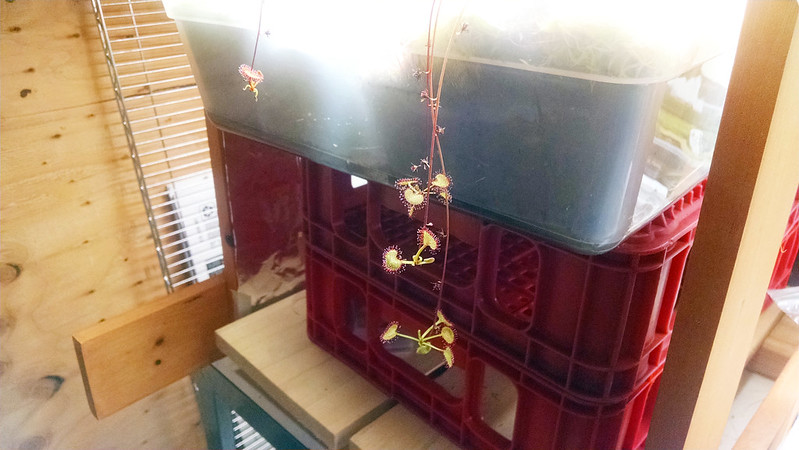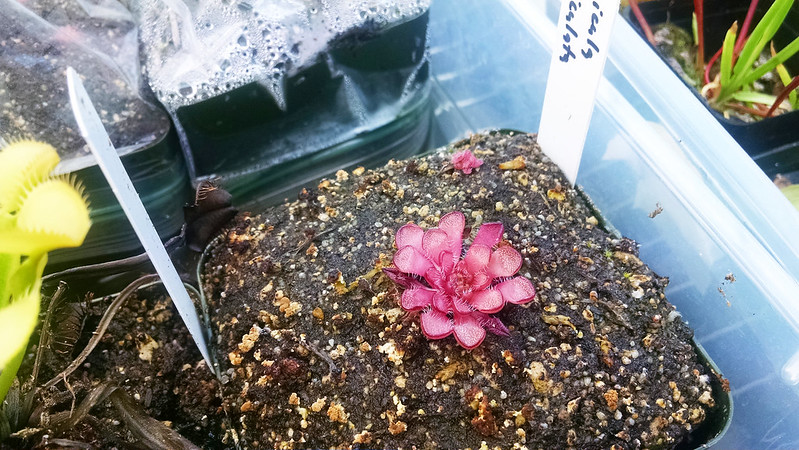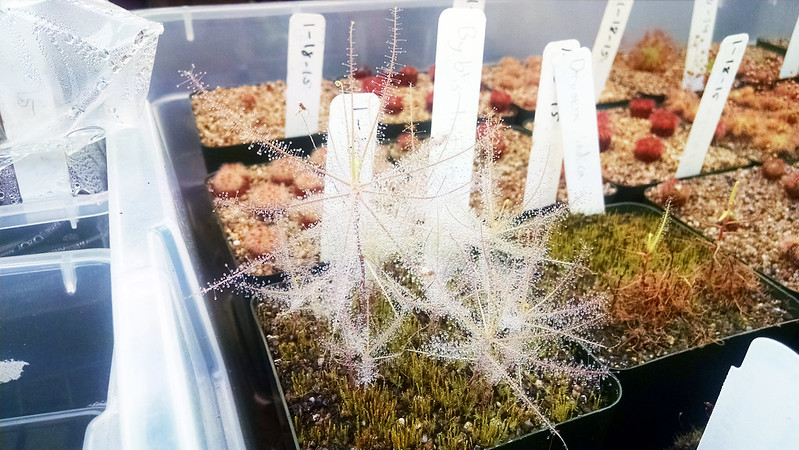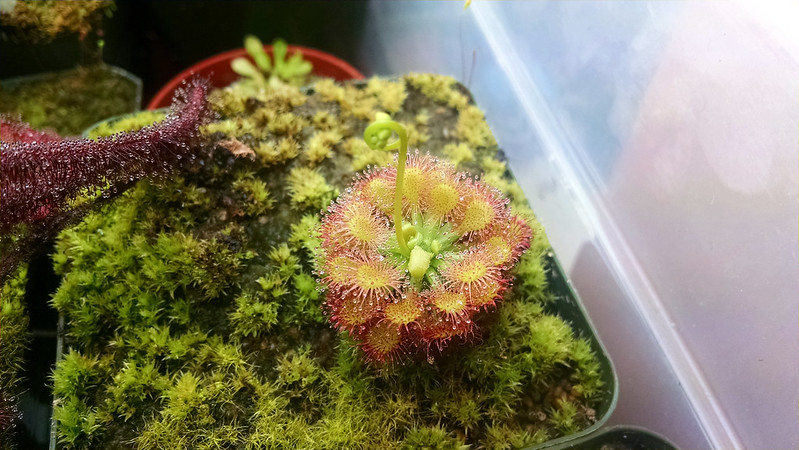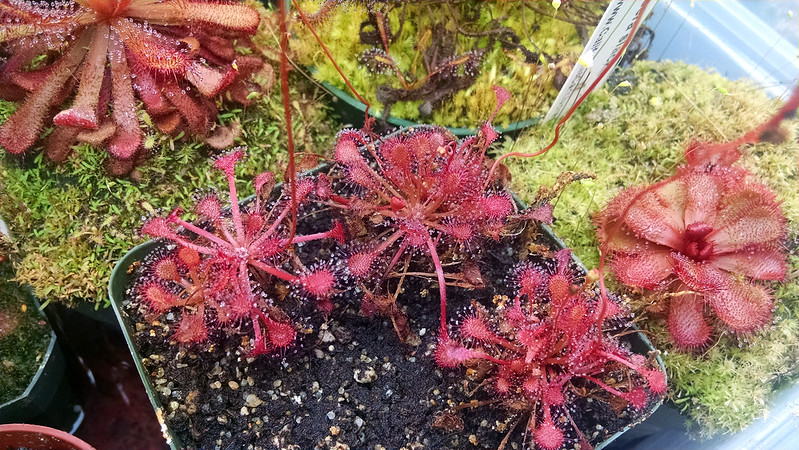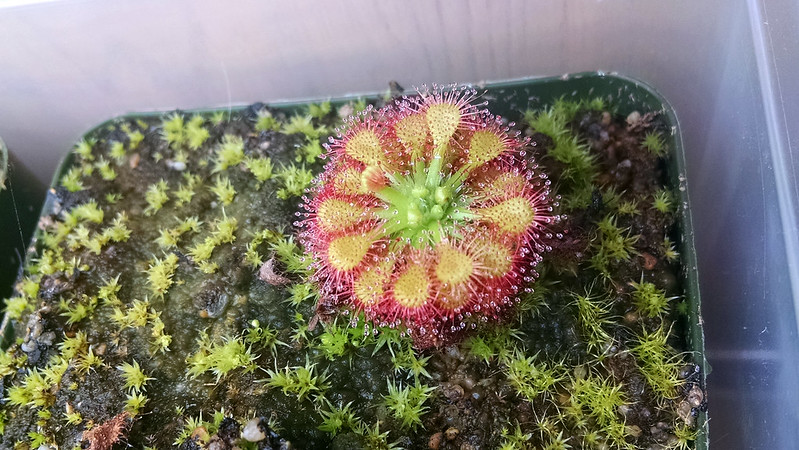Here's a silly story:
A few weeks ago I was rearranging my collection and I took my small pot of
Pinguicula gigantea ×
moctezumae out of its tray and set it on top of my shelves. In the dark. In a dry tray.
Over two weeks later I was walking to my car, looked in the little window in my garage door, and noticed my plant. I rushed back inside, and put it in a proper tray, in the water, under the lights.
It's totally fine.
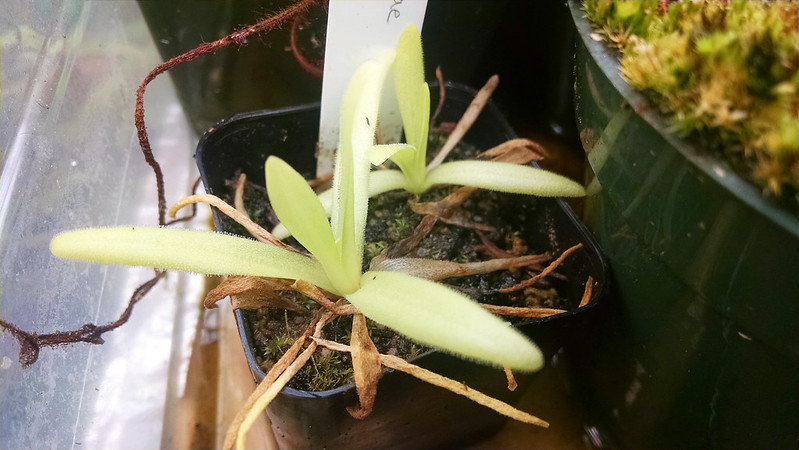 |
| There's even a leaf pull that struck in this time. |
It's barely even etiolated. This pot was in the dark for over 2 weeks. The soil was bone-dry and rock hard. And a couple days later you can't even tell. This is an offset from a plant that my friend Anne got when she was 11, and is the only carnivore she never managed to kill. Great plant!
Another plant that's getting over a rough patch is my
Drosera 'Emerald's Envy'.
 |
| One of my favorites! Glad it's coming back. |
This plant bloomed hard, sending up two flower stalks in quick succession (from which I was able to harvest a healthy amount of seed). Right then we had our last heat wave of the summer, and I think the combination just stressed it out. It had sat around with no traps, just petioles, for over a month, but now it's getting back to business. I've been feeding the new traps in order to give it a good burst of energy.
I've also begun to re-hydrate my
Drosera cistiflora pot.
 |
| Fingers crossed! |
We'll see if I'm successful with it. My tuberous pots aren't showing any sign of life so far, but I'm still holding out hope. This one as well – it went to sleep late, so it didn't get a particularly long dormancy. We'll see!
On the other side of things, my
Drosera brevifolia have germinated!
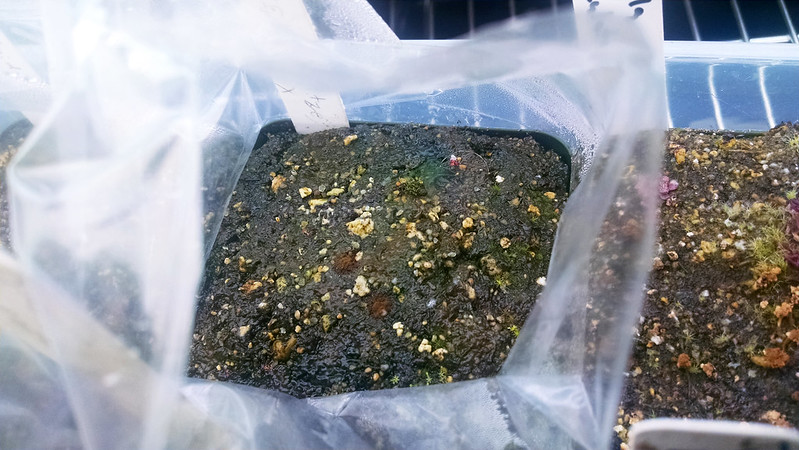 |
| There are at least 4 seedlings in this pot. Try and spot them! |
I noticed (and took this picture) a few days ago, and given the size of the seedlings I'd say they probably germinated sometime in early November. That means it took something like 18 weeks from when I sowed them back in late July. Don't give up on your seeds too quickly! Now I'm just waiting on those red
Drosera filiformis.
The nearby
Drosera burmannii (Gunung Keledang) have had a bit of a head start, and one in particular is looking excellent.
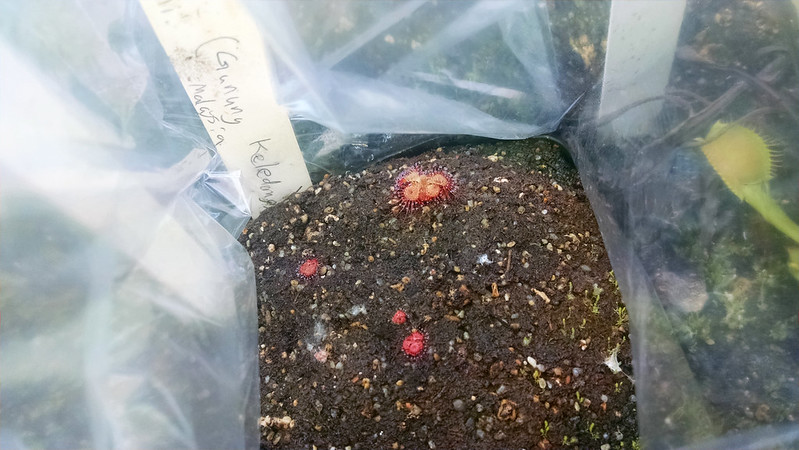 |
| Loving that color combination. |
I should finish hardening these off and get some serious feeding started.
The last set of seed is the one I'm most excited about,
Drosera tomentosa.
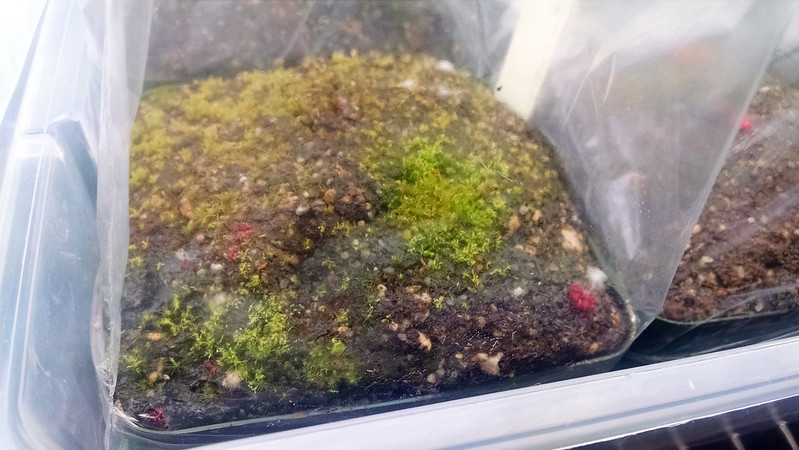 |
| Now they just need to out-compete the moss. |
I hope this is one of the forms with
extravagantly fuzzy flower stalks. They're so cute! I'm trying to find South American sundews right now, btw, and would be happy to trade for plants, roots, leaf cuttings, or seed. Email me at
sundews.etc@gmail.com!
Finally, it's that time of year again. I've spotted the first gemmae of the season! These are
Drosera leucoblasta.
 |
| The first gemmae forming is the real sign of autumn. |
Pygmies are my favorite, as I've said before. And since I already mentioned trading earlier in this post, I might as well say that I'd love to do gemmae swaps with all comers this season. Here is my current list of pygmies:
D. allantostigma
D. barbigera
D. callistos, Brookton large form
D. × Carbarup
D. dichrosepala
D. × Dork's Pink
D. enodes (Scotts River)
D. grievei
D. helodes
D. leucoblasta (Brookton)
D. leucostigma
D. mannii
D. nitidula
D. occidentalis var.
microscapa
D. omissa, pink flower
D. oreopodion
D. palacea, giant form
D. patens
D. pulchella, orange flower
D. pygmaea
D. roseana
D. sargentii
D. silvicola
D. scorpioides, pink flower
D. spilos
And these are the plants I'm looking for this season! The ones in bold are the ones I'm most excited about.
D. androsacea
D. citrina
D. closterostigma
D. echinoblastus
D. eneabba
D. gibsonii
D. hyperostigma
D. lasiantha
D. microscapa
D. miniata
D. nivea
D. parvula
D. pedicellaris
D. platystigma
D. pycnoblasta
D. rechingeri
D. sewelliae
D. stelliflora
D. walyunga
I love trading! Feel free to hit me up to trade whenever.





















